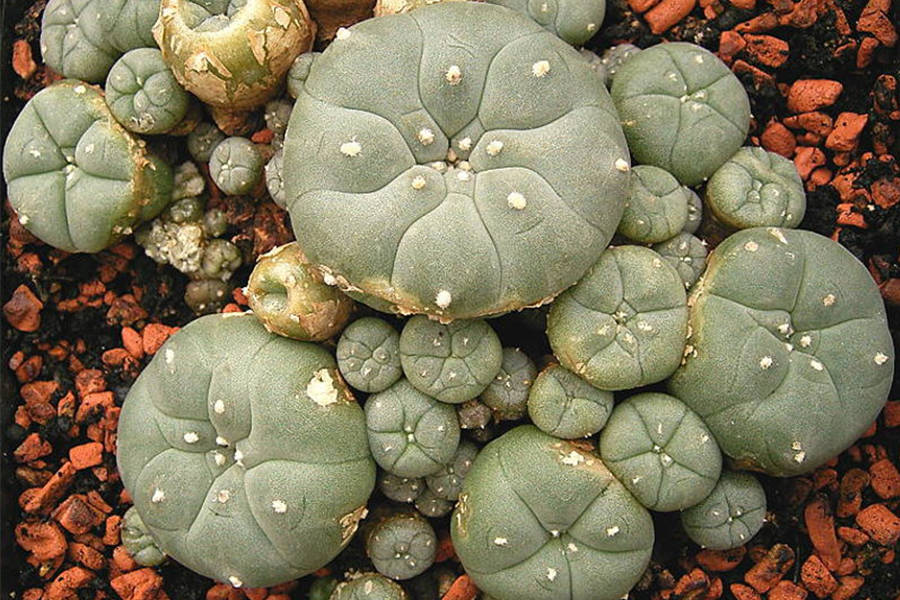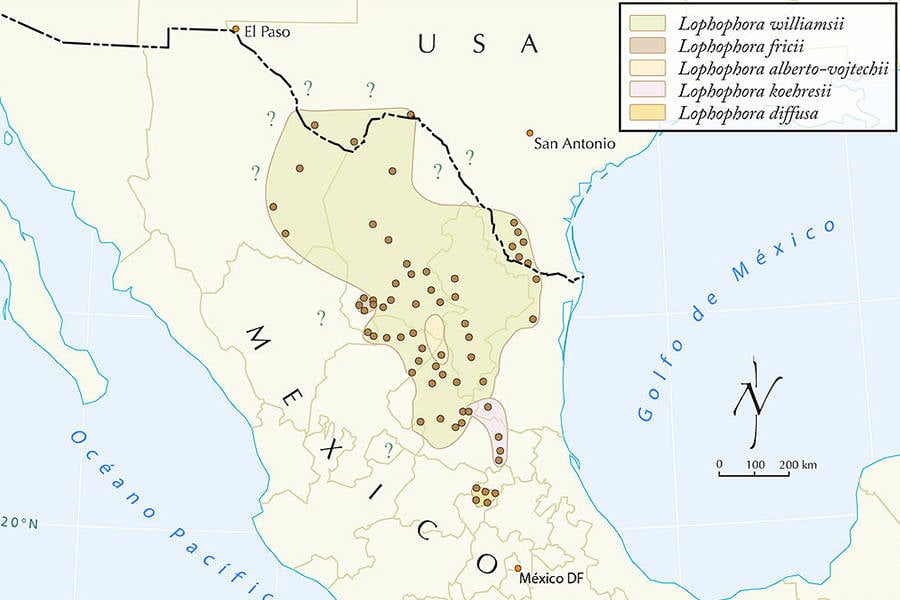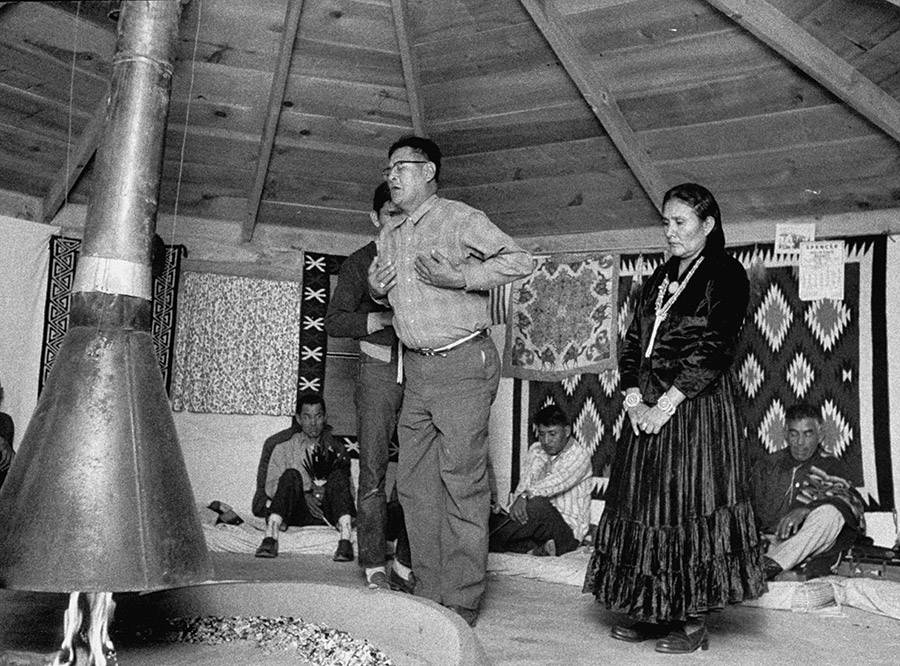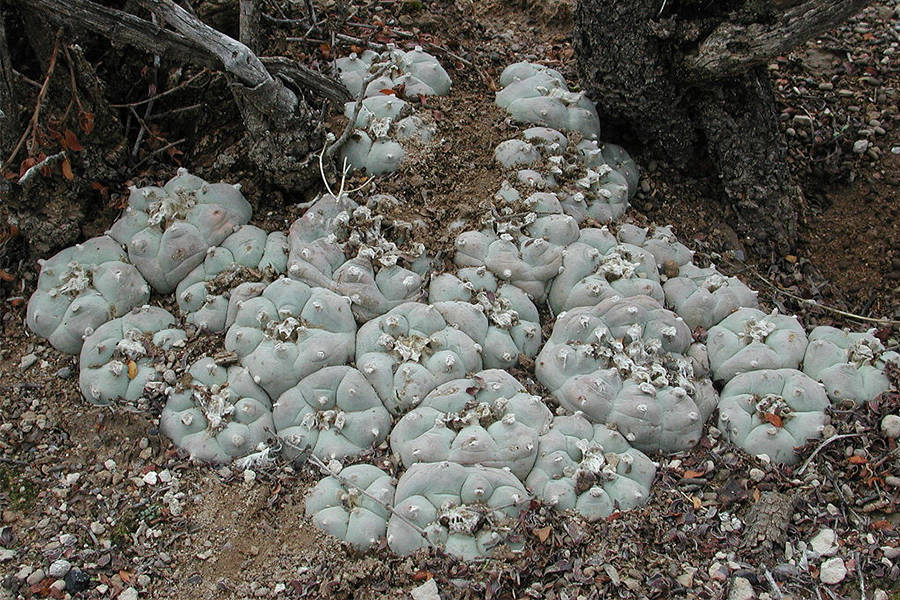Peyote has been used for years by Native American Church members, but for the rest of the world, it's a Class 1 substance and illegal to use.

Wikimedia CommonsThe peyote cactus.
In 1970, the United States published the Comprehensive Drug Abuse Prevention and Control Act. The law organized all controlled substances into classes and, depending on the class the drug fell into, made most of them illegal. However, one of these drugs, a naturally occurring psychedelic known as peyote, managed to slip through the cracks thanks to a loophole.
As the drug is used in Native American religious ceremonies, the consumption of it for religious purposes is legal, while use for observational, scientific, or journalistic intent is permitted by the DEA.
Recreational use is still illegal, though many users claim its very lightly regulated. The mysterious legality of the drug, combined with the wild tales that users bring back from the region where it grows has resulted in an almost mystical air surrounding peyote, and a need to discover what all of the hype is about.
The Inner Workings Of Peyote
It’s rare to find someone today who hasn’t experimented with psychedelic drugs at least once in their life. Over 20 million Americans admit to having tried one in the past, and 1.3 million admit to taking them on a regular basis. But of all those psychedelic drugs trips (the bulk of which are on the wildly popular MDMA), almost none of them are on peyote.
The rarity of people who’ve tried the drug is likely due in part to its rarity as a plant.
Known scientifically as Lophophora williamsii, peyote grows only in northern Mexico and two small regions of southern Texas, near Laredo. It grows underground, in the form of a stout, tough cactus. Usually, only the crown of the plant is visible, the strong, bitter taste of which keeps it safe from animals.
The size of the plants ranges from golf ball to softball sized. The older ones are larger, but regular users say that the smaller, younger ones are more potent.
According to renowned psychedelic drug expert Dr. John Halpern, the effects are similar to most other hallucinogens. The active ingredient that results in the psychedelic trip is mescaline. Not much experimental research has been done on the drug, so most of the theories are educational guesses rather than facts.

Wikimedia CommonsA map outlining where peyote can be found growing naturally.
Halpern claims that a full dose of peyote, roughly 400 milligrams with a one to three percent mescaline content, could result in an eight-twelve hour high. However, not many inexperienced users will ever reach that level. To consume a full dose, one has to eat between 10 and 12 “buttons” or tiny slices of the inner peyote flesh.
Described as extremely bitter, with a texture similar to a green pepper, consuming ten of them isn’t pleasant. Additionally, users will end up with an intensely dry mouth.
When taken recreationally, usual drug side effects occur. Dry mouth, mild anxiety, lethargy, and an inability to concentrate all follow a dose of peyote, but unlike most other drugs there’s no clear beginning, middle, or end.
According to Laurel Tuohy, a writer for VICE who consumed peyote while on a trip to Mexico, the effect was “dreamy.”
“At times I felt mildly sick but that could have been due to heat or dehydration as much as the peyote,” she described in her account of the trip. “When the feelings were strongest, I had the familiar mind-twitch I often associate with psychedelics. I thought I could hear the emptiness of the desert. The first few hours took on a dreamy quality and I was unable to focus fully on anything. The later hours were more lucid and the experience had no sharply defined start, peak, or end. I still felt the dreamy, drifting effects of it the next day.”
“Everything was amplified,” she said. “I was thirstier, the desert was hotter, and the ground was harder. It was easy for me to imagine how peyote could enhance a religious experience.”
The Religion Of Psychedelics

Carl Iwasaki/The LIFE Images Collection/Getty ImagesNavaho Native Americans at Peyote Ceremony in Hogan near Pinyon, conducting special ceremony for a sick boy.
The real reason that peyote is so revered and freely grown in Mexico comes from the Native American cultures long time use of it in religious ceremonies.
For thousands of years, Native Americans in central and northern Mexico have been ingesting peyote for spiritual purposes. The intended effects of the drug consist of heightened awareness, especially of one’s surroundings and emotions.
Halpern spent five years studying the use of peyote by the members of the Native American Church at the Navajo Nation in the Southwestern United States. He described how they used the drug to enhance their emotions during ceremonies for healing and prayer. In one instance, a group of 20 people sat in a teepee, burning sage, and consuming peyote in order to help a husband and wife duo work through their fears about their finances.

Wikimedia CommonsThe peyote plant growing naturally.
While not the intent of the drug, Halpern believes its use in Native American populations has also helped decrease their rates of alcoholism and addiction.
Overall, Native American populations tend to have a higher rate of alcoholism, more than twice the national average. In contrast, those populations who regularly use peyote, such as the Native American Church members of the Navajo Nation, have extremely low rates. They claim the peyote keeps them sober and healthy, and after his years of research, John Halpern suspects they are correct.
Still, regardless of its relatively harmless side effects and potential for therapeutic cures, peyote is still considered a class 1 substance and is illegal to possess for personal recreational use.
Religious ceremonies and scientific or journalistic research aside, those hoping to get their hands on this potential miracle drug are out of luck. That is, unless they’re willing to drive to the middle of the Mexican desert and dig it up themselves.
After learning about the history of peyote, read about how magic mushrooms could be used as a treatment for depression. Then, read about how MDMA could be used to treat PTSD.




